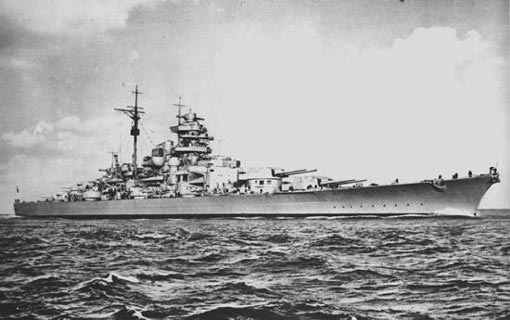
Bismarck December 1940
Wetterbeobachtungs-Schiff
Bismarck Schlachtschiff

Bismarck December 1940
|
Built |
Name |
Denmark Strait |
Note |
|
1940 |
Bismarck |
23-24.5.1941 |
May 1941: supported by
weather ships: WBS: Leipzig |
|
Commerce War: Following the success achieved by the surface ships in the Atlantic during the winter of 1940-1941, the German Naval High Command decided to launch a much more ambitious operation. The idea was to send a powerful battle group comprised of the battleships Bismarck, Tirpitz, Scharnhorst and Gneisenau into the Atlantic to attack Allied merchant shipping. However it was not possible to use Scharnhorst and Gneisenau due to damage caused by British air attacks and mechanical failure. Instead the Germans decided that their newest heavy cruiser, Prinz Eugen, should sail together with Bismarck. Operation Rheinübung started on 18 May 1941, when Bismarck and Prinz Eugen left Gotenhafen. On 21 May, the ships arrived in the Grimstadtfjord, Norway where their camouflage painting was removed. In the evening, the ships left the fjord and headed north. Next day the ships changed course directly towards the Denmark Straits. The British was well aware that Bismarck was on her way trying to break out into the North Atlantic. Admiral Tovey ordered Hood and Prince of Wales to take station south of Iceland. There they would be in a position to cover the Denmark Strait passage or turn east to back up the forces covering the Faeroes-Iceland passage should the Bismarck appear in that area. The Suffolk was ordered to join the Norfolk, in the Denmark Strait. The light cruisers Arethusa, Birmingham and Manchester were directed to resume their patrol of the Faeroes-Iceland passage after refuelling at their bases in Iceland. Early in the morning of 23 May the Bismarck and Prinz Eugen entered the Denmark Strait and by the late afternoon approaching the pack ice off the coast of Greenland. The German squadron proceeded cautiously down the dangerous channel. The narrow passage was the most dangerous part of the breakout. At this time of year not more than 30-40 miles wide. In the early evening Bismarck was sighted by the Suffolk who began shadowing the German squadron. Later Bismarck detected the Norfolk, which had come up to assist the Suffolk. The British cruiser was in the clear, and the Bismarck immediately took her under fire with her main armament. Five salvos in all Bismarck fired before Norfolk raced into a fog bank. The Norfolk fell back and joined Suffolk shadowing the German squadron. In the early morning hours of 24 May 1941, Bismarck and Prinz Eugen steamed through the Denmark Strait, shadowed by Suffolk and Norfolk. Shortly before 6AM, Prinz Eugen, which was ahead of Bismarck, sighted ships to the southeast. These were the battlecruiser Hood and battleship Prince of Wales. The British capital ships soon opened fire with their forward turrets, while rapidly closing the range. Hood initially fired her 15'' guns at Prinz Eugen. Her consort, which carried 14'' guns, shot at Bismarck, but neither made hits. As the British began a turn to bring their after turrets to bear, the two Germans opened fire at Hood. Bismarck's 15'' guns, and the much smaller 8'' of Prinz Eugen, soon found the range and started hitting. Fire broke out amidships on Hood, and at a minute past Six, immediately after Bismarck's fourth salvo arrived, the great battlecruiser's after ammunition magazines exploded in a jet of flame and a large cloud of smoke. Hood's bow rose as her shattered after hull filled with water, and she was soon gone, leaving but three survivors of her crew of over 1400 officers and men. The Germans shifted fire to Prince of Wales, making three 15" and four 8" hits that seriously damaged the British ship. She was troubled throughout the action by gun functioning problems, but still managed to hit Bismarck with three shells before her own damage forced her to turn away and break off the battle. One of the three British 14" projectiles hit Bismarck's hull forward, flooding some of the German ship's bow compartments. Another hit low and amidships, bringing more water into the ship. This damage, though hardly vital, left Bismarck listing to port, down at the bow and unable to use all her oil fuel. Her maximum speed, seakeeping ability and range were all reduced, and she was now leaving an oil slick in her wake. The third shell, which struck high and amidships, made it impossible for Bismarck to launch her floatplane. The brief Battle of the Denmark Strait, which lasted only about seventeen minutes, caused the Germans to terminate Bismarck's sortie. Later on 24 May, Prinz Eugen was detached, while Bismarck began a voyage toward France, where she could be repaired. She was intermittantly attacked by carrier planes and surface ships, ultimately sustaining a torpedo hit in the stern that rendered her unable to steer effectively. British battleships and heavy cruisers intercepted the crippled ship on the morning of 27 May. After less than two hours of battle, shells and torpedoes had reduced Bismarck to a wreck. She capsized and sank, with the loss of all but 115 of her crew of 2221 men. The Dorsetshire was ordered to pick up survivors. The Dorsetshire had taken on board 86 German sailors, and the destroyer Maori had picked up another 25 sailors when suddenly there was a submarine alert. The Dorsetshire immediately got underway followed by the Maori. Later the German submarine U-74 rescued three more sailors. The next day, the German weather ship WBS 7 Sachsenwald rescued two more. |
|||
|
Operation "Rheinübung"
Weather Obervations
Luftwaffe:
Wetterbeobachtungsschiffe (WBS): |
|||
"Bismarck" - Possible mail connections
|
Date |
Port / Ship |
Direction |
| to 18.5.1941 | Gotenhafen, Germany | In & Out |
| 21.5.1941 | Korsfjord, Norway | - |
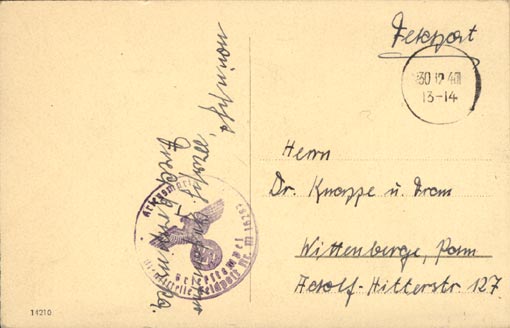
Hamburg
30.12.1940 - Feldpost 16287 = Bismarck.
Card from Artillery Officer (Main Tturret C), Division II,
Kapitänleutnant Karl Knappe
(+ 27.5.1941)
|
Feldpost Nr. M 16287 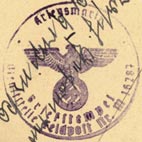 |
(1940-1941) Schlachtschiff „Bismarck“ |
From: "Die deutsche Feldpostübersicht 1939-1945" by Norbert Kannapin.
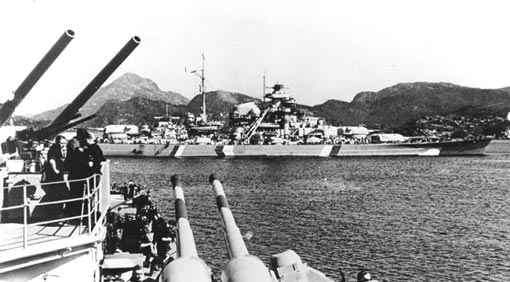
In Korsfjord 21.5.1941
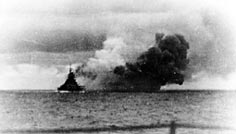
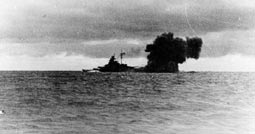
Denmark Strait 24.5.1941: Bismarck firing at
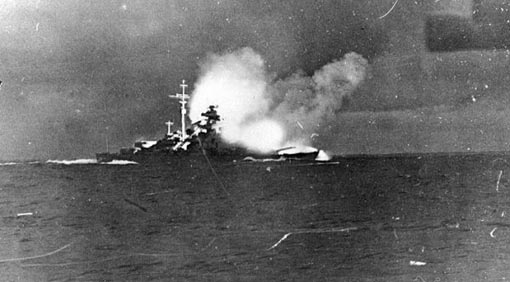
Bismarck firing against the
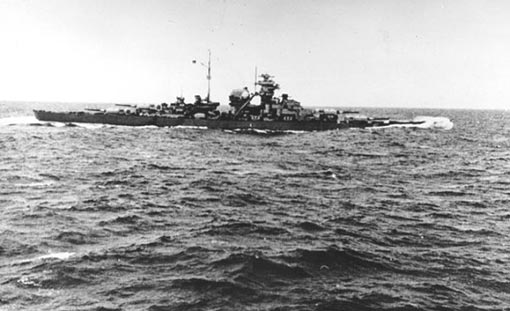
After the battle 24.5.1941
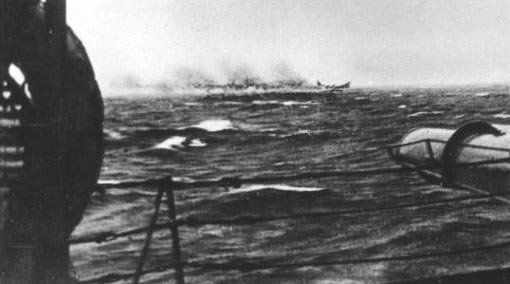
27.5.1941 - Bismarck sinking.
 |
Franz Xaver Untersteger
|
Back
to German Weather ships (WBS)
Update: 28.10.2005
Feedback: warcovers@adslhome.dk